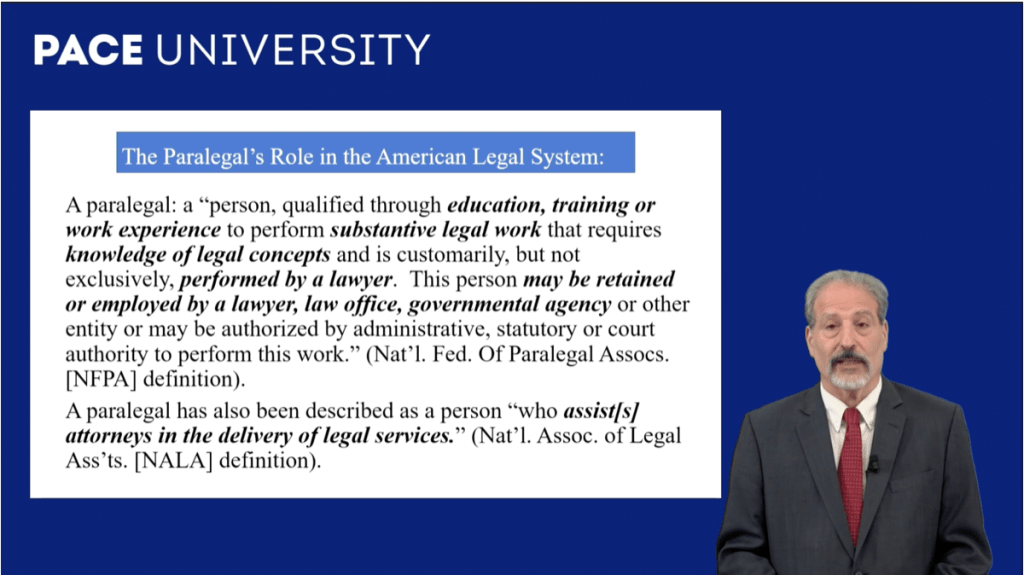Programs: Continuing Education collaborating with faculty from the Elizabeth Haub School of Law.
Goal: Create a video-centric curriculum for paralegals on the Classes platform. Work with a team of ~8 law faculty to create a 15-week experience. The curriculum will be designed so students work through videos, quizzes, and short essay prompts, and have a chance to meet with faculty during virtual office hours.
Outcome: The Paralegal Certificate Program will launch in Fall ’23. Comprised of 190 short videos (10-15 minutes each) across 12 modules, the program will require students to spend 4-6 hours/week on the curriculum (videos will account for about half of that time).

Background:
The Continuing Education team led by Julie Werkheiser was charged with creating a new certificate program from the ground up. Partnering with Haub faculty, Instructional Design staff, and OLC staff, the “paralegal team” was formed. After video production, Instructional Design staff assisted faculty with the creation of the online course experience.
Production:
The video strategy adopted by the OLC was simple: faculty would create PowerPoint presentations, and we would use a “composite” green screen layout to record their lecture (see image above).
While this single-shot look could be considered boring, it is incredibly versatile: 1) students are able to watch either the instructor or the slideshow at any time, 2) it is mobile-friendly in the sense that one can view the video full-screen without a dependance on other aspects of the Classes (or Panopto) platform, and 3) students can speed up or slow down playback. While this isn’t directly related to the composition, it makes it easier to scrub the video and find a particular slide.
After a short design and content review of the PowerPoint presentation, OLC staff were ready to record with the TriCaster. In the Classroom Studio, faculty were encouraged to deliver their lecture at a comfortable pace, working from notes and/or the slideshow itself (which was positioned behind the camera to maintain a reasonable eye-line).
While we sometimes re-shot a particular segment, we more often relied on minor video editing by OLC staff: the removal to awkward pauses, stumbles, coughing, etc. Faculty were coached to simply restart a sentence or section if they thought their delivery wasn’t satisfactory. Final edits were exported from Adobe Premiere and uploaded to Panopto.
While minor, the editing (and publishing) time was not insignificant, ultimately accounting for about half of the 140 hours of OLC staff time required to complete the project.
It was great working with Haub Law School faculty and the Continuing Education team. OLC staff are excited for the program launch, and helping to evolve the curriculum over time.
We hope you’ve found this OLC case study useful. Are you ready to try something out? Please contact OLC staff to begin collaborating with us or reserve studio time.
